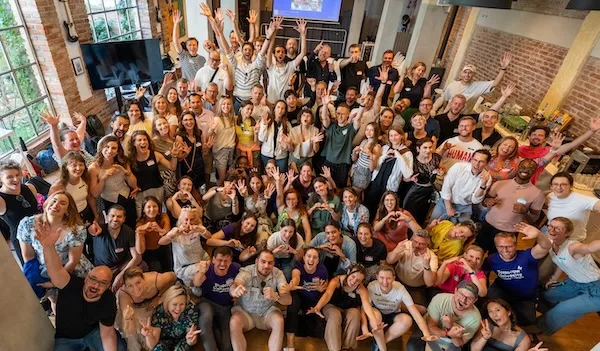What Happened at ToU This July? Event Recap
Every month at Tomorrow University brings something new—and July was no exception. From purpose-driven discussions to global networking, here are the most memorable events and what they mean for your path toward personal and professional growth.
.webp)
Participate in Tomorrow University's engaging bi-monthly Online Events featuring inspiring talks, critical discussions, and insightful stories by global experts and thought leaders. Everyone is invited to our vibrant community gatherings. Catch up on this latest event recap.
ToU Community Events
Let’s dive deeper into our latest online community event, where Anjali R Armstrong, consultant at Baringa, joined us to discuss the profound shift in e-mobility over the last few years. She touched upon both their insights gathered at Baringa as well as the feedback and challenges they receive from their clients.
Currently, the greatest penetration of electronic vehicles in the EU can be observed in Germany, France, and the UK, which all experienced significant growth recently and show high adoption rates. The three main drivers behind the penetration: Policy (in terms of, e.g., regulations and financial incentives), supply (in terms of supply chain operations and availability), and demand (in terms of uncertainty).
Charging Infrastructure in Focus
Anjali mentioned another crucial aspect fueling the uptake: the charging infrastructure. This is the main challenge to consumers successfully adopting electronic vehicles, as one of the main uncertainty from the demand perspective is linked to the inability to charge the car. The major obstacles are therefore having 1. enough public chargers and 2. making them accessible to the public. The charging infrastructure is currently categorized into private (home, workplace, depots) and public (on-street, destination, transient locations).
Who is taking care of this market by covering all aspects and services along the charging infrastructure value chain? From global multinationals to startups, they are all addressing charge point manufacturing as well as installation and maintenance, they work as charge point operators and charge point aggregation platforms and offer additional services. The business models for EV charging range from rapid-charging-focused, multi-location networks to electric forecourt-focused and commercial / fleet-focused.
Rounding up the talk, we also talked about the sustainability of the batteries built into electronic vehicles, which are widely discussed for their environmental hazards. One participant asked: Are any investments made to make the batteries more sustainable as well? According to Anjali, there is not too much movement in the financial markets, and although the conversation is slowly starting, real change is still far away.
Three of the most beneficial key takeaways she mentioned throughout the talk
- While there might be challenges for the transition towards e-mobility, there are exciting opportunities for innovation and sustainability ahead of us!
- One of the key components to keep on pushing toward positive change: having localized microgrids.
- One of the most important issues when talking about sustainable batteries and something that needs to be changed in the future, cheap labor!
Join one of our upcoming events.

.svg)
.svg)

.svg)



.webp)






